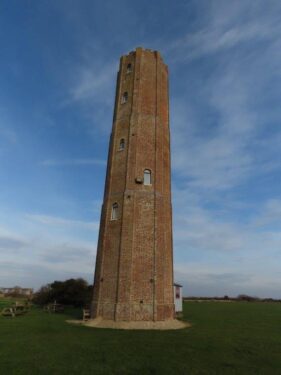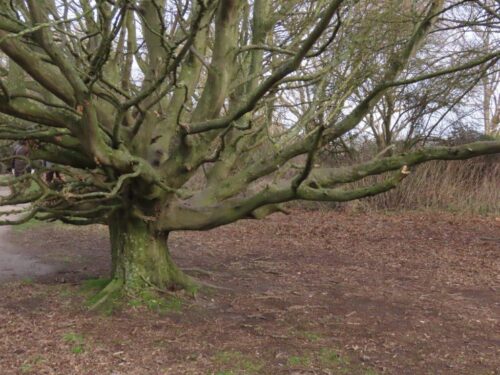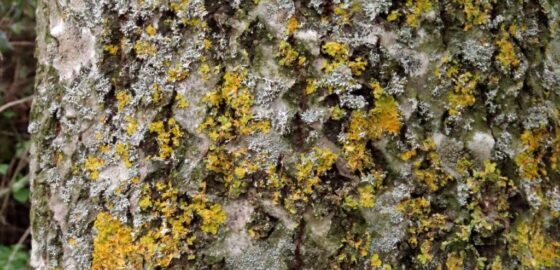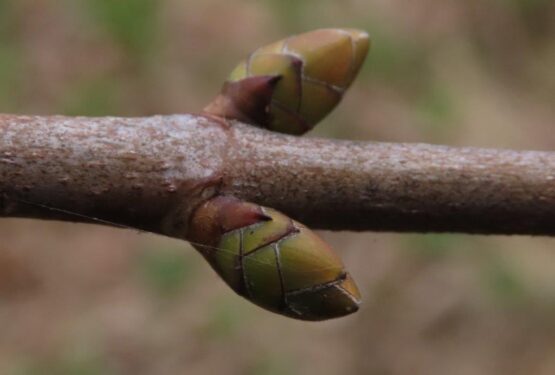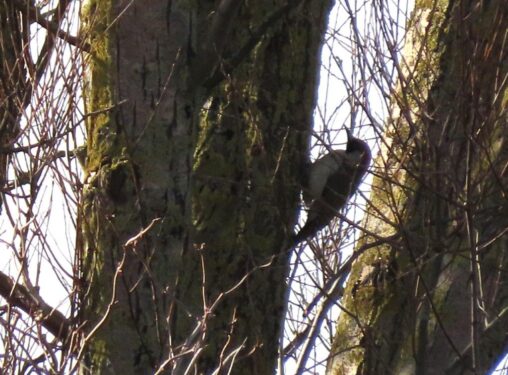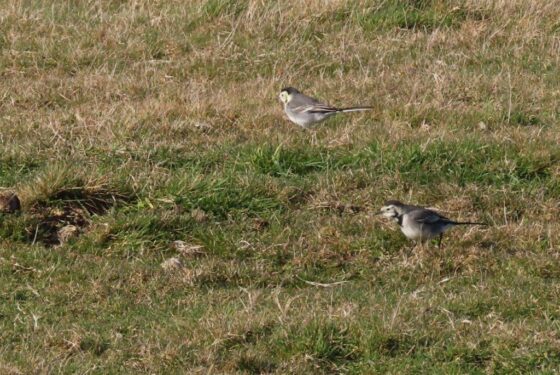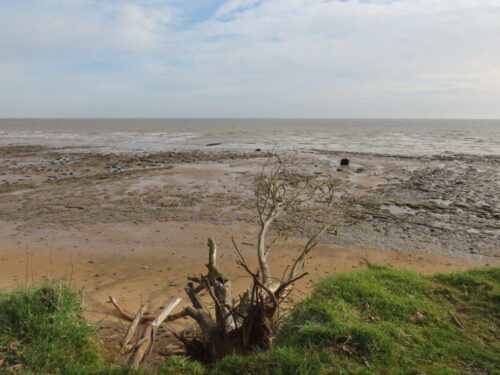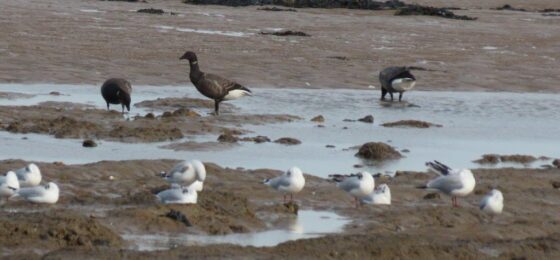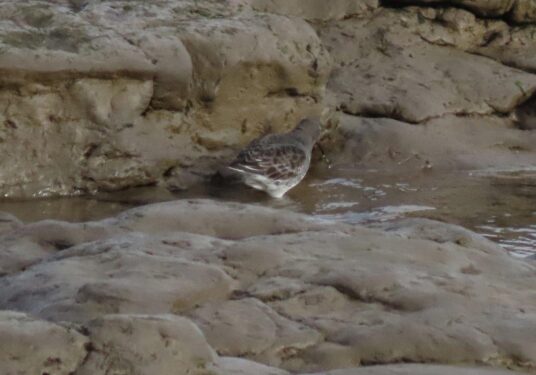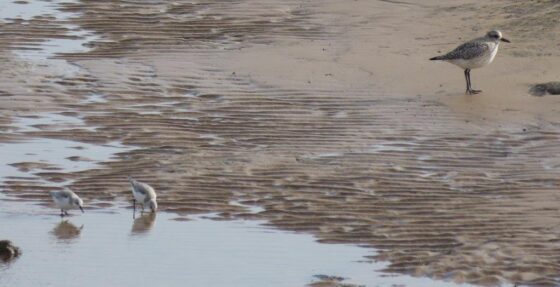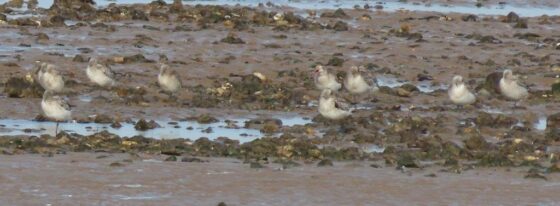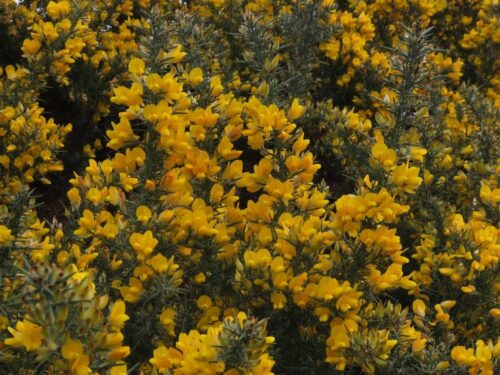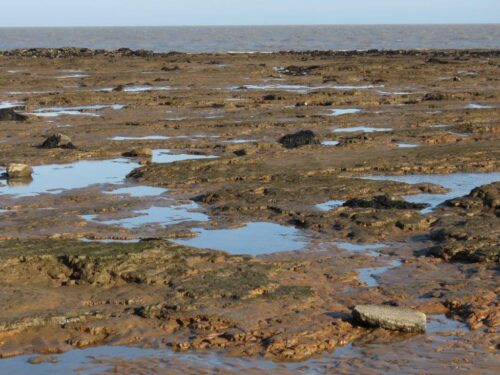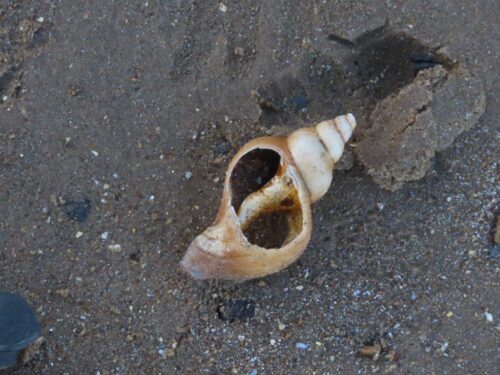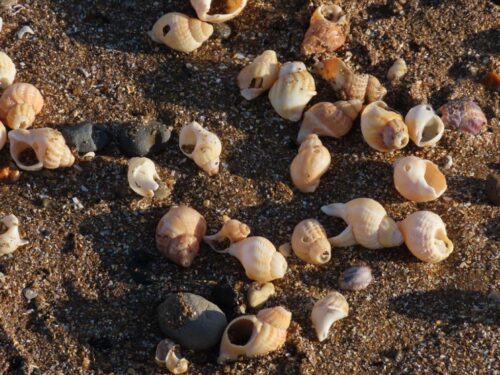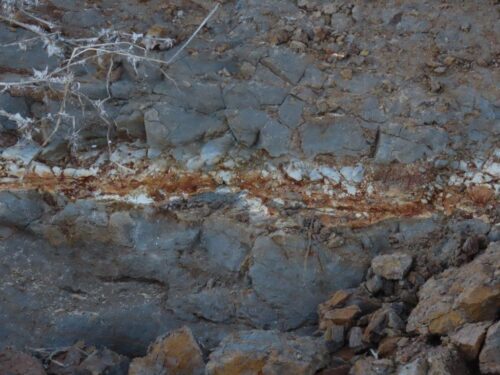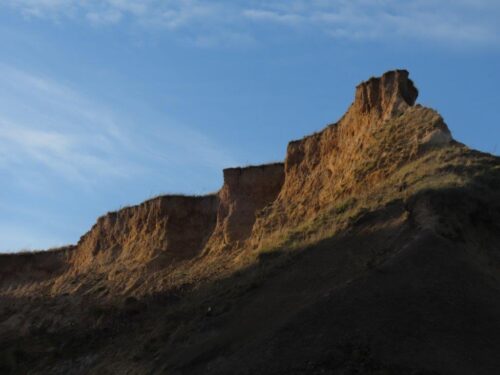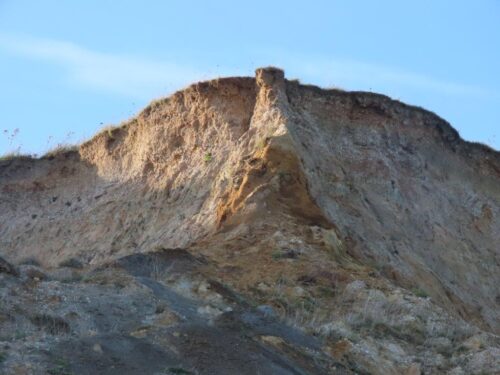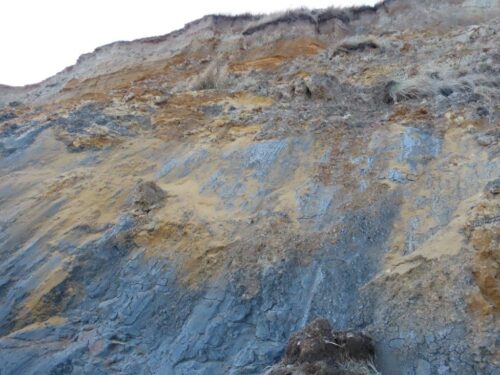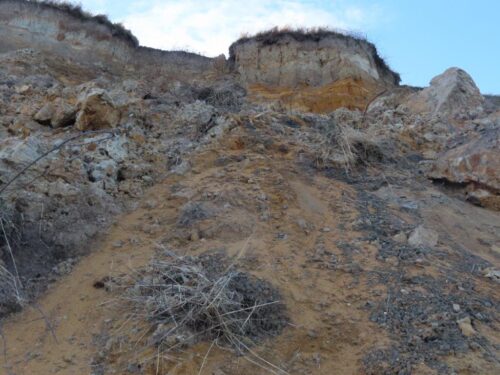The wind may have been in the south for yesterday’s #WildSideOfEssex walk at the Naze, but it was needle-sharp and very cold. Still, the welcome respite of the copse provided opportunities to examine lichens and identify trees by bud, here the lovely purple-fringed bud-scales of Sycamore..
Landbirds, very sensibly, were keeping a low profile, though there were some good flocks of Pied Wagtails (with Skylarks and Meadow Pipits) on sheltered fields, Cetti’s Warblers in Song, and an uncommonly static Green Woodpecker on a distant willow, clinging to leeward.
But lots of the hardier shorebirds – hundreds of Brent, dozens of Bar-tailed Godwits and Sanderlings, and many others, including a Purple Sandpiper, always pretty scarce in Essex and nowadays especially so. Offshore, a single Red-throated Diver flypast was just about all the choppy sea could muster.
Gorse, of course, was the main winter flower (but devoid of insects)…though a few Hemlock and Sea Mayweed flowers were showing, and Alexanders is already sprouting its spring greens. Hog’s Fennel, Golden-samphire and even Colt’s-foot (whose flowers should soon be sprouting) were still deep in their winter slumber, recognisable only from dead seed-heads, the scent of crushed foliage or banks of shirivelled leaves.
And of course, immune to the cold, there was the magnificent geology, new Crag fossils on the beach mingling with wrecks of modern Whelks, and London Clay volcanic ash bands revealed as the fruits of this winter’s erosion. An ever changing scene, both over the geological perspective and in real time, from tide-to-tide.
